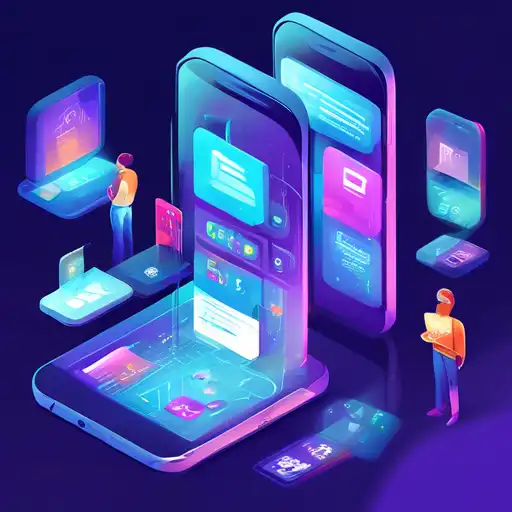Introduction to Mobile Development Trends
The mobile development landscape is constantly evolving, with new technologies and methodologies emerging at a rapid pace. As we look towards the future, several key trends are poised to shape the way developers create and users interact with mobile applications. This article explores these trends, offering insights into what's next for mobile development.
1. The Rise of 5G Technology
One of the most significant trends in mobile development is the advent of 5G technology. With its unparalleled speed and reduced latency, 5G is set to revolutionize mobile app performance, enabling more complex and data-intensive applications. Developers are now focusing on leveraging 5G to enhance user experiences, from streaming high-quality video to enabling real-time multiplayer gaming without lag.
2. Artificial Intelligence and Machine Learning
Artificial Intelligence (AI) and Machine Learning (ML) are becoming increasingly integral to mobile development. These technologies are being used to personalize user experiences, improve app functionality, and even predict user behavior. From chatbots to recommendation engines, AI and ML are making apps smarter and more intuitive.
3. The Growth of Cross-Platform Development Tools
Cross-platform development tools like Flutter and React Native are gaining popularity among developers. These tools allow for the creation of apps that work seamlessly across multiple platforms, reducing development time and costs. As these tools continue to evolve, we can expect to see even more sophisticated and performant cross-platform apps.
4. The Importance of App Security
With the increasing amount of personal data being processed by mobile apps, security has never been more critical. Developers are now prioritizing secure coding practices and incorporating advanced security features, such as biometric authentication and end-to-end encryption, to protect user data.
5. The Emergence of Foldable Devices
Foldable devices are introducing new challenges and opportunities for mobile developers. These devices require apps to adapt to different screen sizes and orientations, pushing developers to think creatively about user interface design and functionality.
6. The Integration of Augmented Reality
Augmented Reality (AR) is transforming the mobile app experience, offering users immersive and interactive ways to engage with content. From retail apps that allow users to visualize products in their own homes to educational apps that bring learning to life, AR is opening up new possibilities for mobile development.
Conclusion
The future of mobile development is bright, with emerging technologies and trends offering exciting opportunities for innovation. By staying ahead of these trends, developers can create apps that not only meet but exceed user expectations. Whether it's leveraging 5G, integrating AI, or embracing cross-platform tools, the possibilities are endless.
For more insights into the latest in technology and development, be sure to check out our other articles on technology trends and development strategies.
